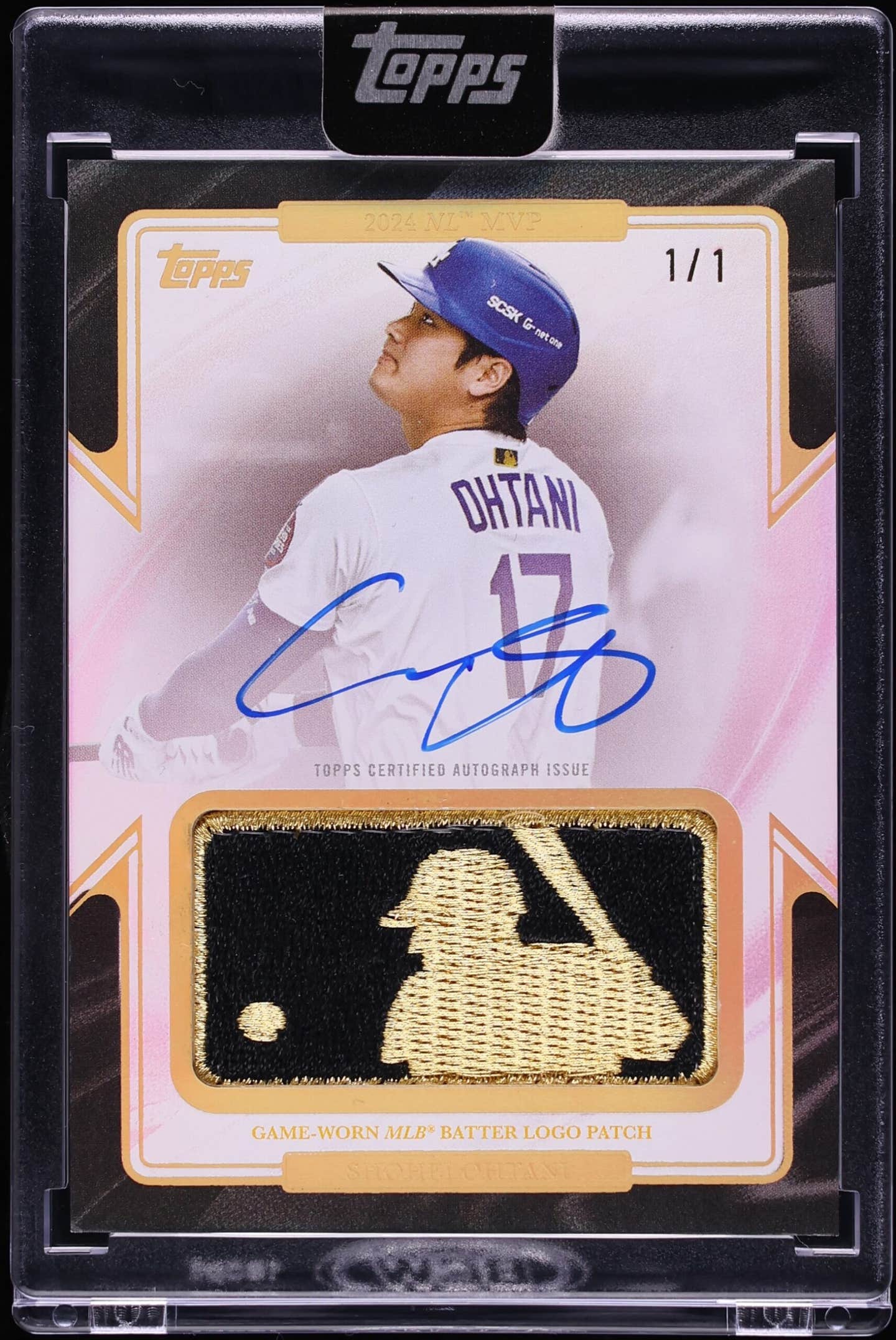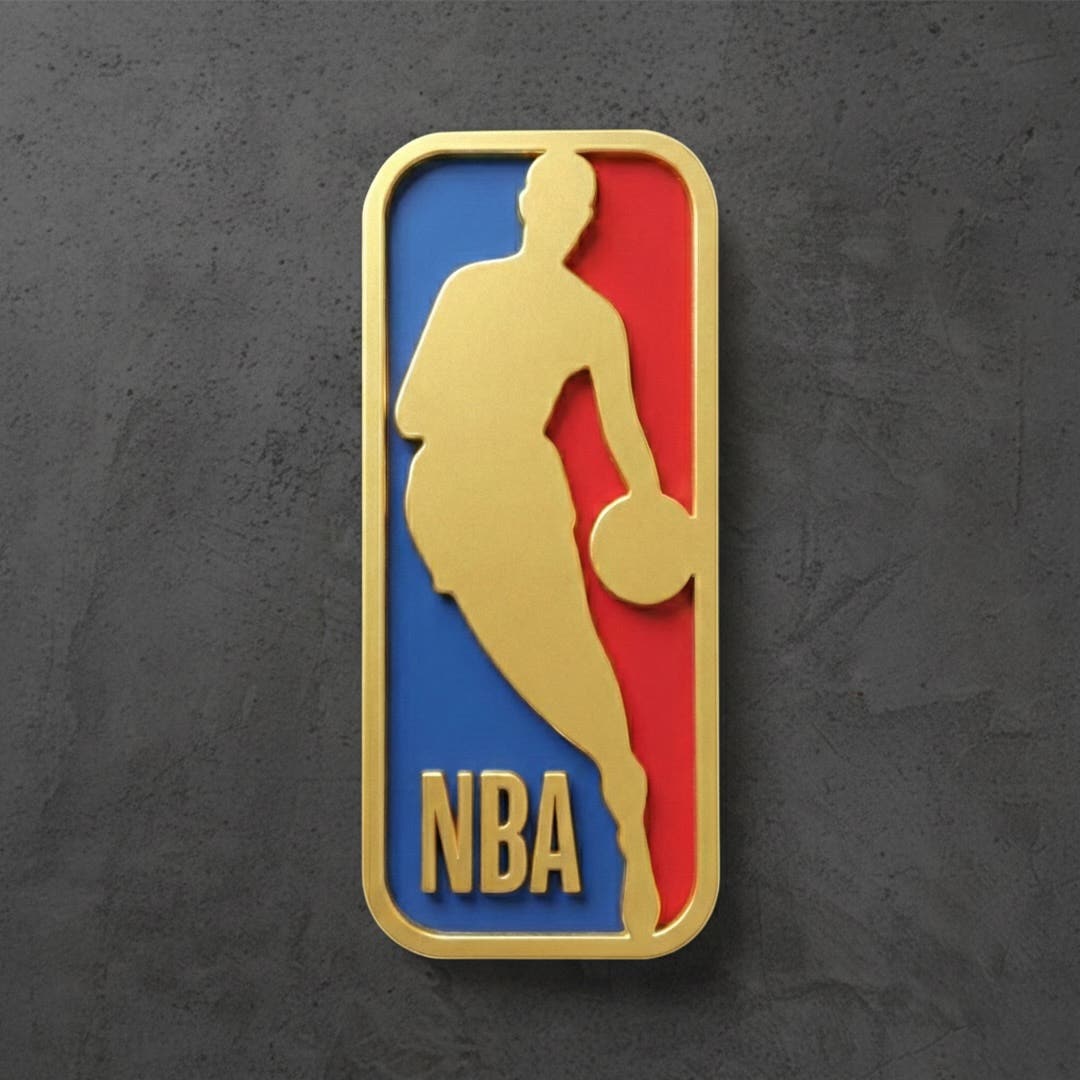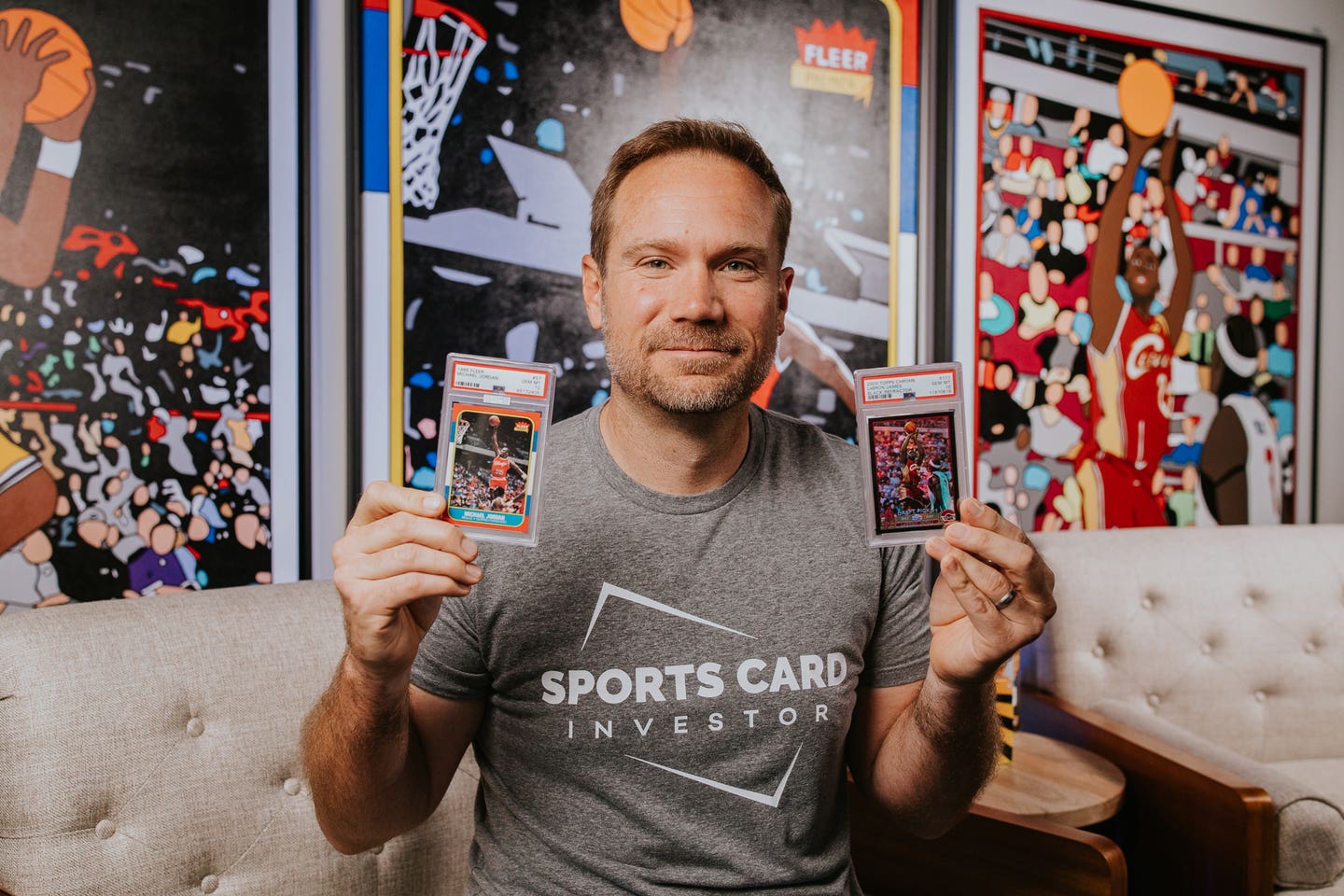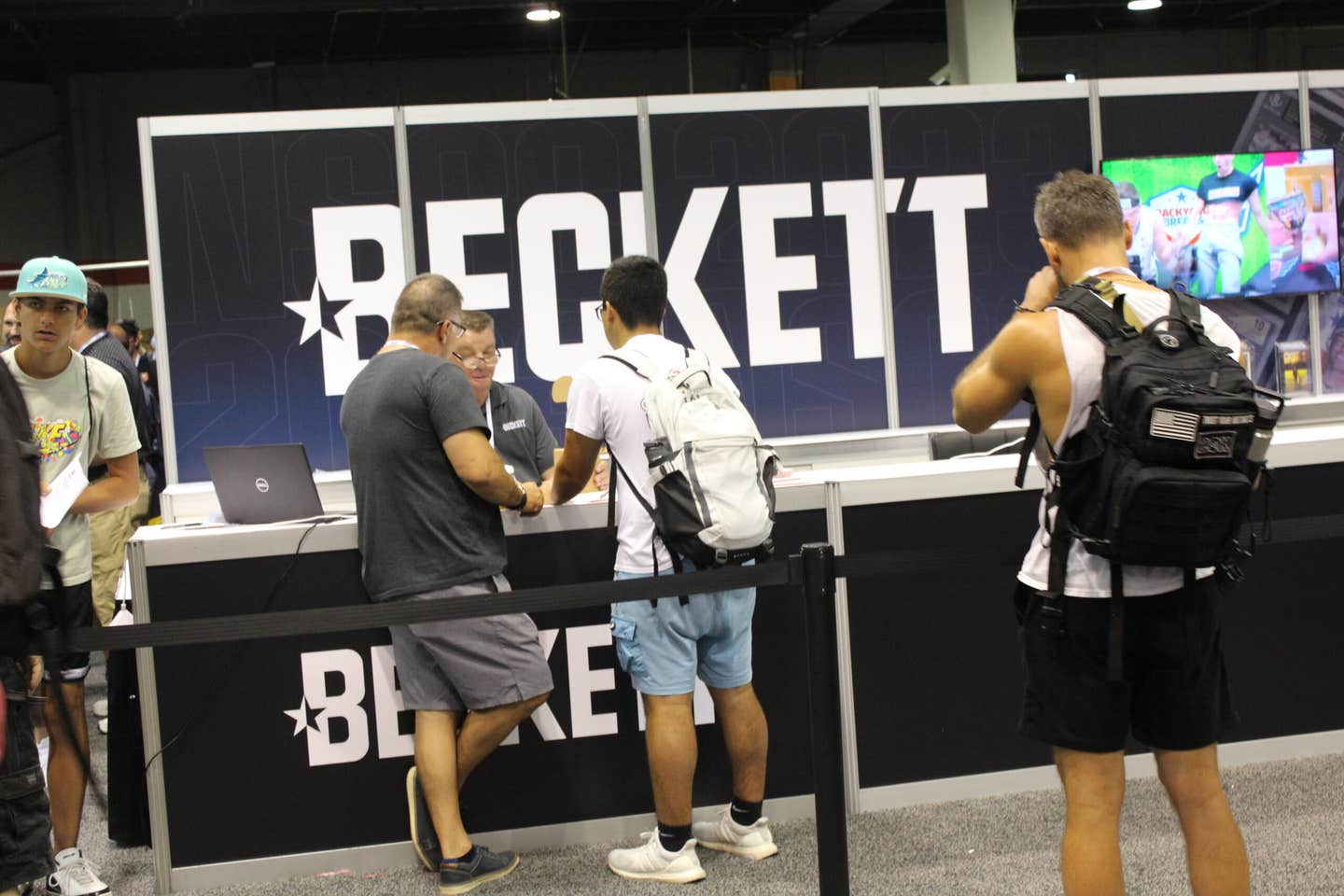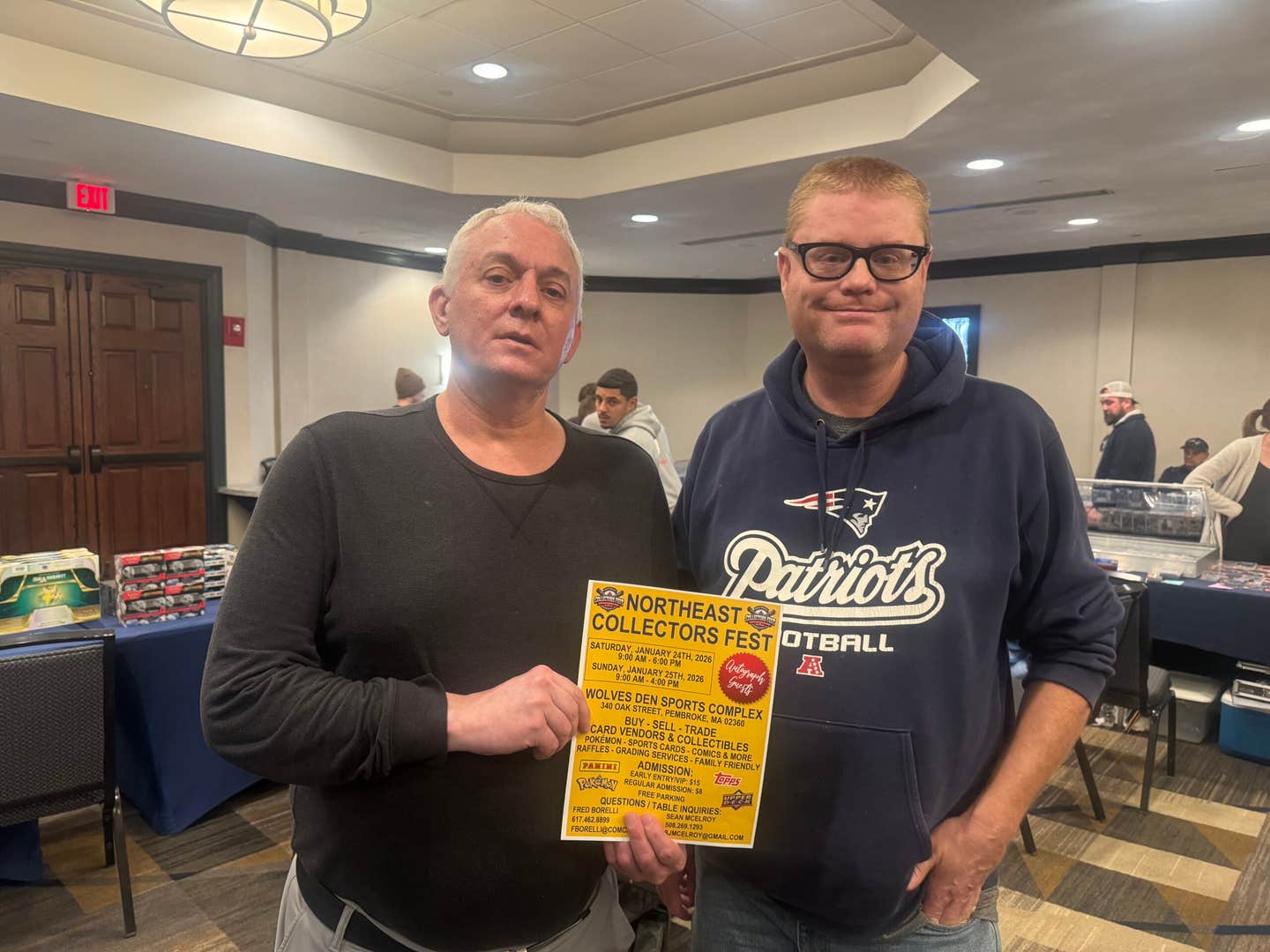Artwork
Colorful 1948 Leaf Baseball set packs plenty of punch with Jackie Robinson, Joe D and Teddy Ballgame
(EDITOR'S NOTE: Card images courtesy of collector Marshall Fogel, unless otherwise noted.)
The three most iconic baseball card sets in the hobby are arguably the 1909-11 T206 tobacco set, 1933 Goudey and 1952 Topps.
But the 1948-49 Leaf Gum Co. release stands tall with those legendary sets.
Rookie cards of Jackie Robinson and Leroy “Satchel” Paige, stars Joe DiMaggio, Ted Williams and Stan Musial and former legends Babe Ruth and Honus Wagner highlight the 98-card set.
Related Content:
The ’48-49 Leaf release became the first major baseball card set following the ending of World War II. The historical significance of the set ranks it up there with the all-time greats.
“I think absolutely if you’re going to expand those top three to a top five, the ’48 Leaf Baseball is either four or five, has to be,” said Leighton Sheldon, owner of Vintage Breaks and Just Collect. “Now, I could make an argument that the [1911] Turkey Red set should be in there in the top five, because I just absolutely adore that set with the colors. ... But I would say if you expanded the top three to a top five, you’ve got to put ’48 Leaf Baseball in there.”
In Sheldon’s opinion, there are multiple reasons the ’48-49 Leaf set—which came out in early 1949—has become a decorated piece in the hobby.
“When you look at it, it feels very artsy, like art deco with the colors,” Sheldon said. “In other words, forget that we know anything about cards, you can see why the ’48 Leaf set was substantially more interesting than the ’48 Bowman Baseball [set].
“The second thing that comes to mind [and] is just really incredible is the combination of what ultimately became some really, really key rookie cards and some cards that I call all-time greats. When you factor in the Jackie Robinson rookie and you talk about Satchel Paige, but you always talk about how there’s literally an honorary Babe Ruth card, and Teddy Ballgame has a card that predates Bowman by a year or two … it’s just a very, very exciting set.”
The ’48-49 Leaf set is filled with short prints—half the set, including the Paige card—and are tough to obtain in high grades. PSA has graded 31,567 cards from the set with only three earning Gem Mint 10 status and 97 examples labeled in a 9.
Add to that the print quality was streaky with either colors being faded or registration making some of the images blurry, it has all the makings of a rare masterpiece.
“It’s one of those sets that so wonderfully combines star power with inherent difficulty that it’s not for the faint of heart,” said Heritage Auctions Executive Vice President of Sports Joe Orlando. “When you think about different sets and condition obstacles and that sort of thing, there aren’t many sets that compare to the 1948 Leaf set. Not only do you have the issue with it being filled with short prints but anyone who has attempted to collect the set will tell you that the incredibly wide variance in appearance of the cards is perhaps as wide as any you will see from that era. What I mean by that is you can have 10 different Ted Williams’ or 10 different Jackie Robinsons or 10 different Babe Ruths and you have them spread across the table and they can have wildly different strengths of print quality and colors and centering.
“It really is for the advanced collector who has a discerning eye, because you can find cards even within the same technical grade that have wildly different appearances as it relates to color and print quality.”
Orlando pinpoints Bob Feller’s card as being extremely tough with condition.
“The Bob Feller was made in a way that there are no Bob Fellers that are entirely crisp and focused,” Orlando said. “They all have the out-of-register appearance to a degree, because it’s just the way the card was made. So, you don’t have that crisp detail as you might see on let’s say a Williams or a Ruth where you can find them where their print quality is a little bit better.”
HIGH-GRADE HUNT
One thing is for sure about the set, the colors really pop in high-grade examples. Nobody knows that better than legendary collector Marshall Fogel.
“For some reason, I always liked that set even though the printing is always messed up, because you couldn’t get supplies, because the war was over,” Fogel said. “Color printing was really not available in the way it would be later in the ’50s.”
Fogel’s fascination with the ’48-49 Leaf set started when he had the opportunity to purchase some of the best-known examples. In the mid-1990s, Fogel received a call from Al Rosen, aka Mr. Mint. Rosen had gotten his hands on hundreds of ’48-49 Leaf cards from some firefighters in New York whose grandparents had worked for Leaf. Rosen pieced together a number of sets; Fogel purchased a complete raw set with some of the nicest cards in Rosen’s find.
In 1996, Fogel had the young grading company PSA slab his set. What came out of that were a number of diamonds in the rough. His Ruth was graded a 9, which is one of only five in existence and there aren’t any 10s. Fogel paid $4,000 for the raw Ruth.
“I thought I overpaid, I really did,” Fogel said. “I don’t think anybody cared about the set. But as time went on, it became a historical set.”
The Williams came back a 9, one of only seven with none higher. Fogel earned 8s for his Robinson, Paige, DiMaggio, Musial, Feller and Wagner cards. The Paige has a population of just five, none higher; the Feller is a pop six, none higher.
“8s and 9s are impossible to get,” said the 84-year-old Fogel.
JACKIE, SATCHEL SURGE
The Robinson and Paige gems are two of the most recognizable cards in the entire hobby. The two Negro League stars, who were instrumental in breaking the color barrier in baseball, made their first appearances on trading cards in this release.
The Robinson, with its bright yellow background and Dodger blue cap, is exuberant. The card has experienced a massive surge in price the last few years.
“I think it’s a combination of a couple of things. First of all, in the last several years, I don’t think there is a single sports figure in the hobby that has escalated more in value than Jackie Robinson,” Orlando said. “A lot of that has to do with an emphasis and increased attention on social justice issues and then a greater appreciation for what Robinson did in that respect. I would challenge anyone to come up with a single sports figure that has increased more in value hobby-wise than Jackie Robinson.”
PSA has graded just under 1,900 total copies of the Leaf Robinson. Only 47 have garnered an 8 or 9 with no 10s.
“I call that card a keeper, right?” Sheldon said. “That’s the kind of card where a collector gets it, they don’t sell it.”
As for the Paige, it’s extremely hard to find in any grade. PSA has slabbed just 196 total Paige cards. The highest examples are 7s and 8s with a combination of just 32 cards in those two grades.
“It is one of the handful of Satchel Paige cards from his playing career that someone can buy,” Orlando said. “If you study the pop report and if you’ve looked at it like I have over the past few decades, it’s one of those cards in higher grades that has barely moved, if at all. It’s so tough that the chances of finding a new, ungraded, fresh-to-the-market Paige in a higher grade is one of the toughest cards to find in the hobby in that grade range.”
Like the Robinson, the market for Paige rookies continues to stay hot.
“One of the things that I noticed, which is really interesting, is it costs a lot of money to enter the Satchel Paige market,” Sheldon said. “If I bought that card, I wouldn’t buy a 1. I feel like you could buy a 4 or 5 for not substantially more.”
IMAGE HEROES
Babe Ruth’s playing career ended in 1935, capping a 22-year run that included seven World Series titles with the Boston Red Sox and New York Yankees.
Thirteen years after his final at-bat and just months after his death, Leaf memorialized The Great Bambino in its set.
“Even though the Babe Ruth card was technically made well after his playing days, it is still in some ways treated like a playing days Ruth card,” Orlando said. “When you think about the history of baseball manufacturing, it really is an outlier in that regard. The general rule is that if a card is made during the playing days, it is perceived in one way. If it is not manufactured during the playing career, it is perceived in an entirely different way.”
Ruth’s ’48-49 Leaf cards don’t garner astronomical prices like his 1933 Goudeys, but they still fetch a pretty penny.
Wagner, who goes by John and not Honus on his card, is sporting a mouthful of chewing tobacco. (The juxtaposition of that with the supposed reason his T206 card was pulled from production is quite humorous. But that’s another story for another day.)
The most aesthetically pleasing card, at least in Sheldon’s mind, is Williams showing off his perfect swing.
“It really is a classic,” Sheldon said. “Looking at it now, he’s basically the greatest hitter, if not in the top three greatest hitters, to ever live. … If you look at that classic, iconic pose, he’s literally in follow-through swing with his bat. He’s just swung and he’s staring off into the distance wherever the ball has gone. Then that combination of red, white and blue, obviously, [speaks] of America and our country colors.”
Williams and his Yankees counterpart Joe DiMaggio both are American heroes, returning from the war just a few years earlier.
“I think DiMaggio is card number one for a reason. I think he was always a hero,” Fogel said. “And, of course, Williams is right up at the front as well.”
The DiMaggio card is one of Orlando’s favorites from the set.
“It is one of the most—if this is even possible— overlooked DiMaggio cards in his career,” Orlando said. “If you look in the collective pop reports for both PSA and SGC you can see how difficult that card is. When you start talking about near-mint to mint 8 and higher, it thins out very, very quickly. It is a very, very tough card. In part, because it’s the number one card in the set, and we all know the stories about number one cards feeling the brunt of handling, just because of the way that so many collectors would store and organize their cards. But, perhaps more importantly, that card often comes way off-centered.”
For so many reasons, the 1948-49 Leaf set is truly iconic for baseball lovers.
“There’s something special about the set, it’s sort of raw. It feels so simple, so naïve,” Fogel said. “It’s what you would expect after the war when baseball was still considered the national pastime.”
You Also Might Like: Brewers bring back popular Police trading card set with fun, new twist




